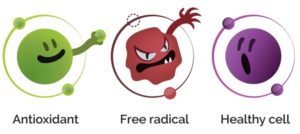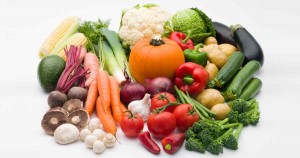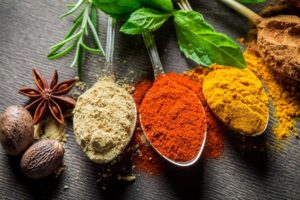 A big thanks to my friends at KSHB Channel 41 and KCLIVE for allowing me to share health and fitness tips on the show regularly.
A big thanks to my friends at KSHB Channel 41 and KCLIVE for allowing me to share health and fitness tips on the show regularly.
This week the topic was polyphenols?
What exactly are polyphenols and why should you care? Check out this quick segment for the highlights and then eat your vegetables, chocolate, and wine!
More on Polyphenol Foods
 Polyphenols are active compounds that are naturally found in fruits, vegetables, cereals, spices, and some beverages—like wine, coffee, and tea. Polyphenols act as powerful antioxidants, fighting oxidative stress and inflammation.
Polyphenols are active compounds that are naturally found in fruits, vegetables, cereals, spices, and some beverages—like wine, coffee, and tea. Polyphenols act as powerful antioxidants, fighting oxidative stress and inflammation.
Free radicals generated from harmful agents like ultraviolet rays, radiation, and some pathogens, can be neutralized by the antioxidants in foods high in polyphenols.
 Research has shown that diets high in foods rich in polyphenols can help regulate blood sugar, stress hormones and insulin to help prevent the development of illnesses such as metabolic disease, cancer, heart disease, and diabetes.
Research has shown that diets high in foods rich in polyphenols can help regulate blood sugar, stress hormones and insulin to help prevent the development of illnesses such as metabolic disease, cancer, heart disease, and diabetes.
The anti-inflammatory properties of polyphenols may also help reduce symptoms of inflammatory conditions like rheumatoid arthritis, lupus, and inflammatory bowel disease.
Scientists are also starting to investigate polyphenols as a way to slow outward signs of aging too, making it a buzz nutrient in the beauty industry.
 According to scientific research, a good goal is to aim to get 650 milligrams of polyphenols each day, but consuming foods high in polyphenols will be beneficial no matter what because they’re generally healthier food choices in the first place.
According to scientific research, a good goal is to aim to get 650 milligrams of polyphenols each day, but consuming foods high in polyphenols will be beneficial no matter what because they’re generally healthier food choices in the first place.
The best way to guarantee overall health benefits is still by consuming them in 4-5 servings of fruits and veggies per day, drinking green or black tea and coffee, as well as the occasional delight of red wine and chocolate!
10 foods rich in polyphenols
- Cherries. Delicious and flavorful!
- Strawberries. Buy organic!
- Red grapes. Best news ever: This also includes red wine. The key—whether you’re going for the fruit in its food form, juice, or wine—is to go for red grapes since the polyphenols are found in their skins. (Green grapes only have 10 mg of polyphenols per serving)
- Red onion. Similarly, with red grapes, the key here is to go for red onions over yellow ones. You’ll also get more benefits if you eat them raw.
- Artichokes. More into veggies than fruits? Artichokes are a top source of polyphenols. In one study, scientists even used them as a key component in helping treat breast cancer.
- Spinach. Not an artichoke fan? Spinach has a decent amount of polyphenols, too. You’ll also be getting a good amount of fiber, iron, calcium, and vitamin C by adding the green to your plate.
- Hazelnuts. All nuts have polyphenols, but hazelnuts have the most. As for other nuts, pecans contain about twice as many polyphenols than almonds.
- Dark chocolate. Your dessert is totally working in your favor—as long as you stay on the dark side and don’t have it in excess.
- Coffee. That’s right—your morning cup is full of polyphenols. If you want to get the absolute most, go for a cherry roast.
- Black tea. If you’re a tea drinker, go black; it has a higher polyphenol amount than other varieties, such as white or green.
Some of the very richest sources also include spices and seeds:
- Cloves

- Star anise
- Cocoa powder
- Mexican oregano, dried
- Celery seed
- Black chokeberry
- Flaxseed meal
- Black elderberry
- Chestnut
- Tumeric
At Pilates 1901, we don’t just move bodies, we nurture people. T School is our Healthy Lifestyle program, providing guidance on the three pillars of healthy living: Food, Movement and Mindful Practice. We’re on hiatus until this Fall but we will be offering our next three-week Detox in October 2019.
This is what past participants have to say about T School.
Want to reserve your spot early? Email us today!

Leave a Reply